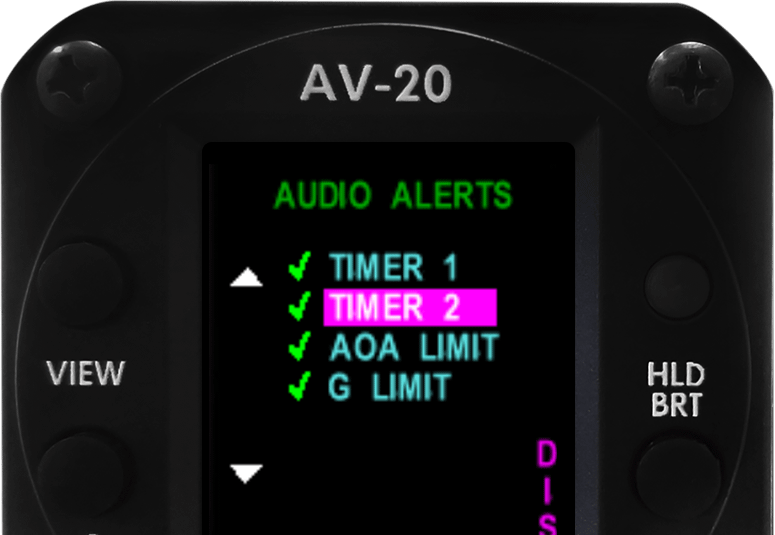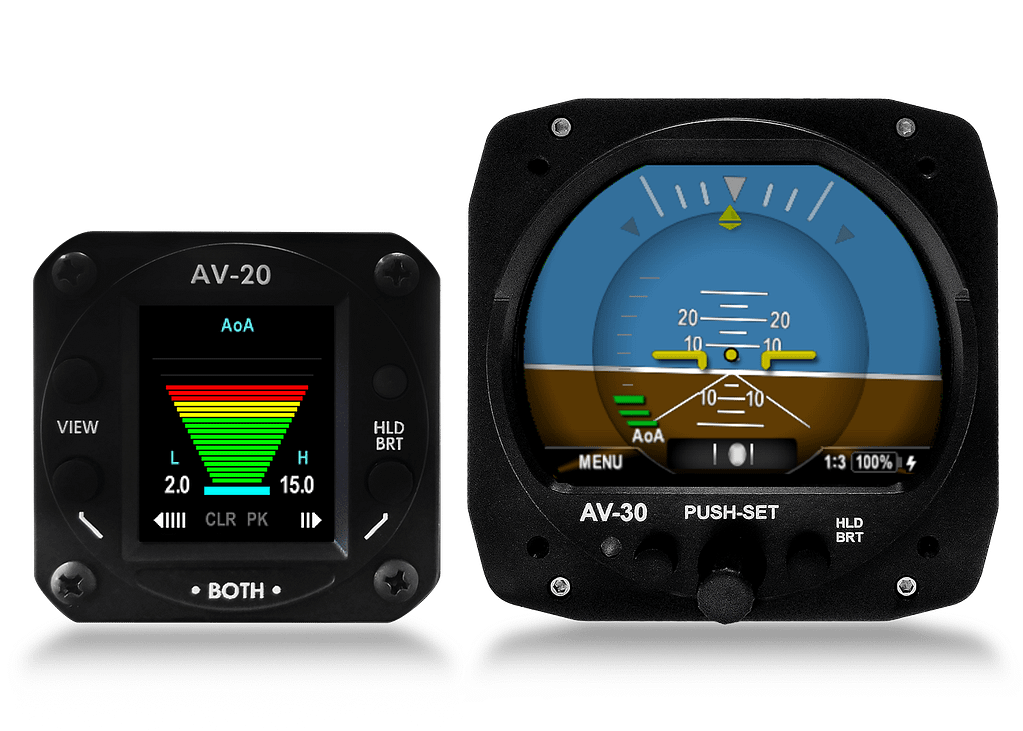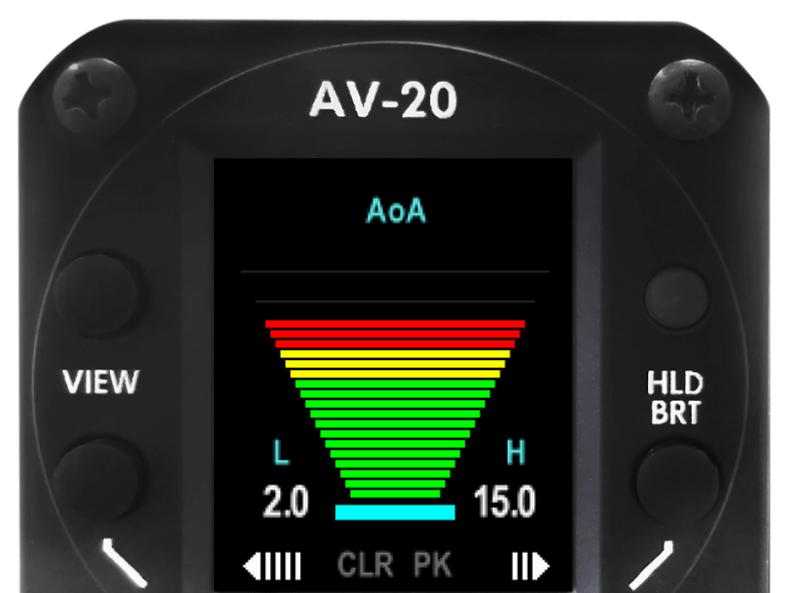Fits in Your Panel
Cutting-Edge Technology Without the Cutting
AV-20-S fits in your existing 2” panel slot seamlessly. By mounting from behind, eliminating the need for cutting or replacing your panel.
12-In-1 Functionality
Customizable Display
- AoA Display (Voice Alerting & Peaks)
- G-Meter Display (Voice Alerting & Peaks)
- Attitude (Roll / Pitch)
- Slip / Skid Indication
- Clock (GMT / Local)
- Outside Air Temperature (C / F)
- Bus Voltage Display
- Dual User Timers (Count Up / Down)
- Engine Run Timer
- Flight Timer
- Density Altitude Display
- True Airspeed Display (Kts / Mph)
- Audio Alerts (AoA, G, Roll Limits)
SCROLL TO VIEW MORE

Sunlight Readable Display
Goodbye Glare
With a matte display, AV-20-S is visible in direct sunlight and automatically adjusts brightness to ambient light.
Audio Alerts
Eyes On the Sky
Fly focused and aware with customizable audio alerts. AV-20-S’ many display configurations offer several audio triggers to alert you of critical flight information.

Probeless Angle of Attack
Avoid Stalls
The AV-20-S alerts you visually and aurally if you approach a dangerous AoA. AoA is calculated by comparing the aircraft’s pitch, flight path, and G-loading.



